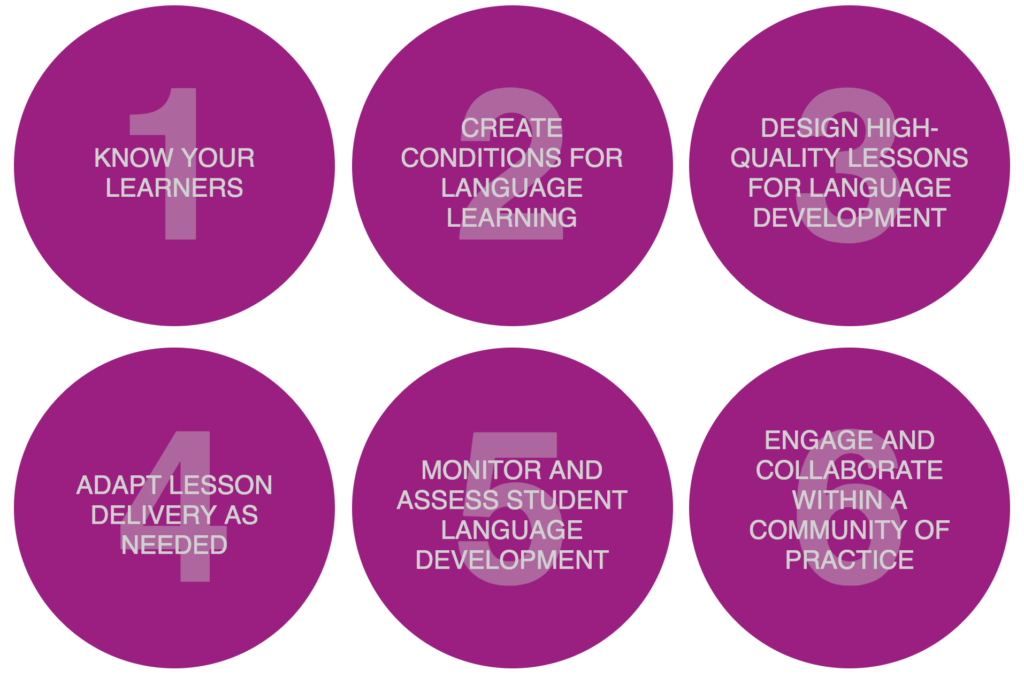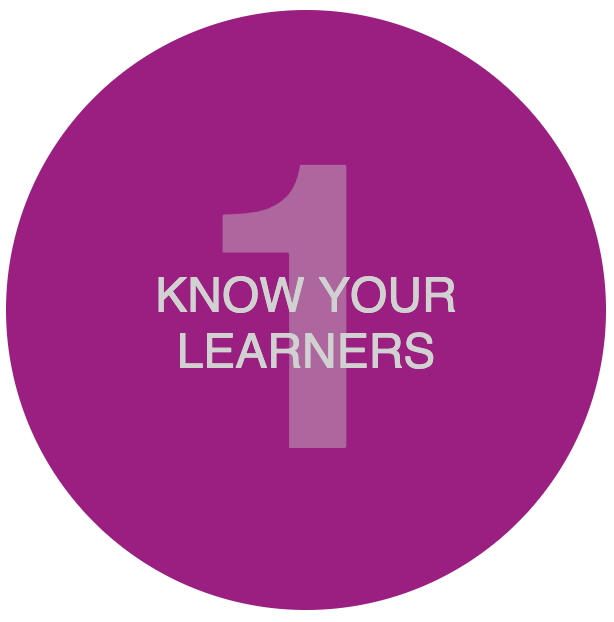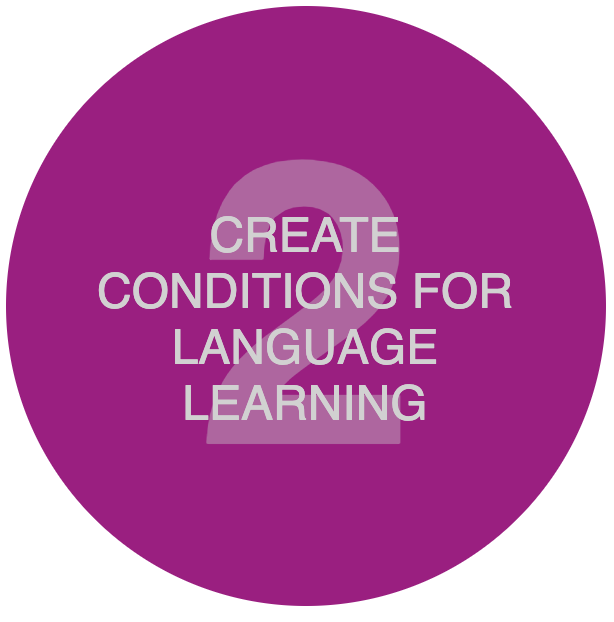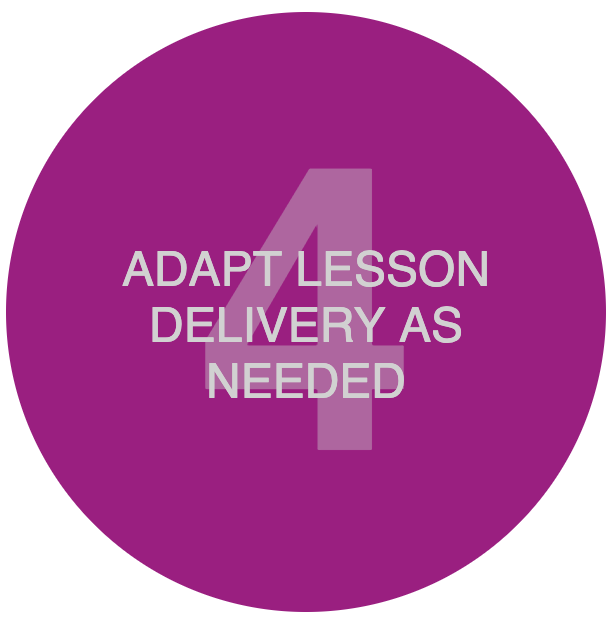My Take on the 6 Principles of Language Teaching
“The 6 Principles for EXEMPLARY TEACHING of ENGLISH LANGUAGE” were created by TESOL International Association. I have not taken, nor take credit, for creating the principles mentioned in the following blog. Visit their website at: https://www.tesol.org/the-6-principles/

The 6 Principles are:
- Know your learners.
- Create conditions for language learning.
- Design high-quality lessons for language learning development.
- Adapt lesson delivery as needed.
- Monitor and assess student language development.
- Engage and collaborate within a community of practice.

The reason TESOL’s principles caught my eye is that very first principle: KNOW YOUR LEARNERS. I don’t often see that as the first suggestion from language teachers or resources. I’m currently preparing a workshop on the principles and thought I’d discuss some thoughts about a few of the principles. I’d highly recommend looking through the website for more information on each principle.

- KNOW YOUR LEARNERS
The principles say that exemplary teachers take time to know some basic background information about their students, and then use that to form lessons and activities.
As an ESL teacher, I’ve found that doing first week activities that dig into student’s culture, interests, and learning styles is very helpful for myself as the teacher. Some ways I use that information would be: using their interests as the content of texts or activities whenever possible, teach to their learning styles (not my own!), and creating a foundation for relationship building.
Examples:
- One high school ESL class was particularly obsessed with basketball. So, I used a documentary on basketball for listening practice, played trashket-ball as a review game, and created grammar sentences with basketball players and teams as the content.
- I personally love using artsy-crafty activities that include a lot of imagery or students creating images/visuals. However, one class I’ve had particularly did not like drawing and it was always like pulling teeth. They preferred doing a lot more listening tasks, like listening to podcasts or “Music Monday”. This doesn’t mean I didn’t teach the strategy of visualization, but I scaled back my use of those activities.
- Use the information to continue building a relationship. If a student comes into class early and I have some time to chat, I can ask them how their cat is doing or if they were able to eat hot pot over the weekend (if that’s their favorite food). I believe in being friendly, not necessarily their friend, but friendLY.

2. CREATE CONDITIONS FOR LANGUAGE LEARNING
“Exemplary teachers create a classroom culture so students feel comfortable. … Use a variety of instructional approaches to appeal to divers learners. Teach students strategies to actively participate in academic conversations” (TESOL International Association, 2018).
There’s a lot that goes into principle 2, but if I had to rank all 6 principles, #2 would be my NUMBER ONE principle: CLASSROOM ENVIRONMENT MATTERS.
“Our society tends to dismiss kindness as a minor virtue, rather than the tremendous force it can truly be.” – Sharon Salzberg.
This quote is important to me, because kindness is an essential part of being a teacher. If your goal is language production, students must feel comfortable enough to take the risk of making mistakes in front of others.
How I do this: Greet students at the door if possible with “Hello, how are you?”. It also sounds cheesy, but I think telling your students “I believe in you” is essential. It can be done naturally through your teaching and encouragement, but simply I just say, “Hey Josh*, I believe in you. You can do this”.
Be intentional with your responses to student answers and behavior in class. Our words and actions matter and can quickly change the environment of a class.
I’ve linked a Positive Framework resource I created for a workshop years ago.
Starting with the first two principles is a GREAT start, but I want to discuss one more:

Principle 4: ADAPT LESSON DELIVERY AS NEEDED
“Exemplary teachers continually access as they teach – observing and reflecting on learners’ responses… If students struggle or are not challenged enough, teachers adjust their lessons – reteaching or enhancing the tasks accordingly. This decision-making may occur on any day and sometimes you will need to make decisions within seconds” (TESOL International Association, 2018).
If student-centered instruction is your goal, then continually adapting and changing your lessons, approach, and self as a teacher is necessary. Unfortunately, the to do this well, it does take a lot of time and intention. It’s easy to want to teach the same resources or lessons semester after semester for the sake of saving time, but it’s not always beneficial to the students.
Some ideas:
- Don’t be afraid to for-go your plan in the middle of class. If you see something that needs more time, get a new idea, need to add a challenge activity – do it.
- If you notice students generally struggling with a concept, review it in a new meaningful way. I like doing a quick review at the beginning of class or an exit ticket. For example, I was teaching an advanced writing class where complex grammar and writing forms were expected. However, I noticed a continual issue with subject/verb agreement. This is fundamental, so even though it wasn’t in the course outline, I decided to spend a good 30 minutes of meaningful review and practice on this grammar point. Why? Because hopefully that would help their writing for the remainder of the semester.
- Reflecting and being honest with my own teaching is hard, but so important. If something doesn’t work, I ask myself was it something I did or didn’t do? Did the students need more review? Were the instructions clear? Did they need more scaffolding before a productive activity?
- I’m not great at making notes after every lesson, but I know some teachers benefit from having a little journal with them as they teach and write notes and observations. When filling out my weekly plans or curriculum guides, I do try to note if something worked exceptionally well or not well.
- Lastly, being a teacher who is able to continually assess and adopt means you must also be continually learning and open to new ideas and methods of teaching. Try new things! As other teachers for help! (This goes along with principle 6: Engage and collaborate within a community of practice).
I don’t mean to leave out Principles 3, 5, & 6. They are so so so important, but I don’t think principle 4 gets spoken about enough among educators.
So those are my thoughts on a few of the principles. The website has additional principles for K-12 educators, paraprofessionals, and adult education. Take a look!
Happy Teaching!
the ESL girl
